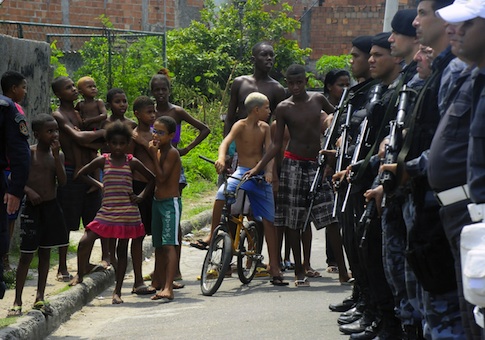Latin America is now the world’s most violent region but is receiving less U.S. military and financial assistance, according to a recent report and other figures.
Latin America surpassed Africa as the region with the most murders per 100,000 people, according to the new report from the United Nations Office on Drugs and Crime. Several countries in the Western Hemisphere had murder rates that eclipsed 25 per 100,000 people in 2012, compared to the global average of about six.
The report said 30 percent of the homicides in the Americas could be attributed to a proliferation of organized crime and gang-related violence.
For example, Honduras had one of the world’s highest murder rates with 90.4 per 100,000 people. Mexican drug cartels and transnational criminal groups such as the Mara Salvatrucha (MS-13) and 18th Street gangs have infiltrated the country in recent years.
Some of the violence is fueled by those groups’ drug smuggling operations into the United States. Recent estimates show that about 86 percent of the cocaine trafficked to the United States first transits through the Mexico and Central American corridor, with about 75 percent of all cocaine smuggling flights from South America first landing in Honduras.
Roger Noriega, former assistant secretary of state for Western Hemisphere Affairs during the George W. Bush administration, said in an interview that rising Latin American homicide rates partially reflect neglect of the region by the Obama administration.
"All of this is underwritten by drug trafficking, for which the United States has a singular responsibility," he said. "We need to be doing more, but we have an administration whose highest priorities in Latin America are global climate change and recovering pre-Colombian artifacts. It’s disastrous neglect by the U.S."
The State Department requested about $200 million less this year for international narcotics control and law enforcement in the region compared to actual 2013 spending, though it would receive more resources than other parts of the world. The department did not respond to a request for comment.
Additionally, Marine Gen. John Kelly told lawmakers last month that his command is unable to interdict almost three-fourths of maritime drug smuggling into the United States, mostly due to military budget cuts. Kelly leads U.S. Southern Command, which covers Central America, South America, and the Caribbean.
Kelly acknowledged at the time that his command receives the "least priority" among the five overseas command regions for U.S. forces. He said he only had about 5 percent of the intelligence, surveillance, and reconnaissance equipment needed to substantially reduce drug smuggling and human trafficking into the United States.
"I simply sit and watch it go by," he said.
"I can see the flow," he added. "I just don’t have end-game assets."
Noriega said weak and corrupt governing institutions and law enforcement have exacerbated the spike in Latin American crime.
Venezuela, where a crackdown on protesters by government forces has resulted in nearly 40 deaths, is the only country in South America with a consistently increasing homicide rate since 1995, according to the U.N. report. Several Venezuelan government and military officials have been linked to drug trafficking groups such as the Revolutionary Armed Forces of Colombia (FARC).
"If you have the rule of law, and institutions and political will to apply the rule of law, and independent courts, you can achieve that reduction [in crime]," Noriega said. "If you on the other hand have a regime that is systematically violating the rule of law and undermining independent courts, you’re going to have that crime getting out of control."
Colombia was one of the few bright spots for the region with a declining homicide rate since 1996. The United States has spent more than $8 billion on joint military training and anti-drug efforts with Colombia since 2000.
